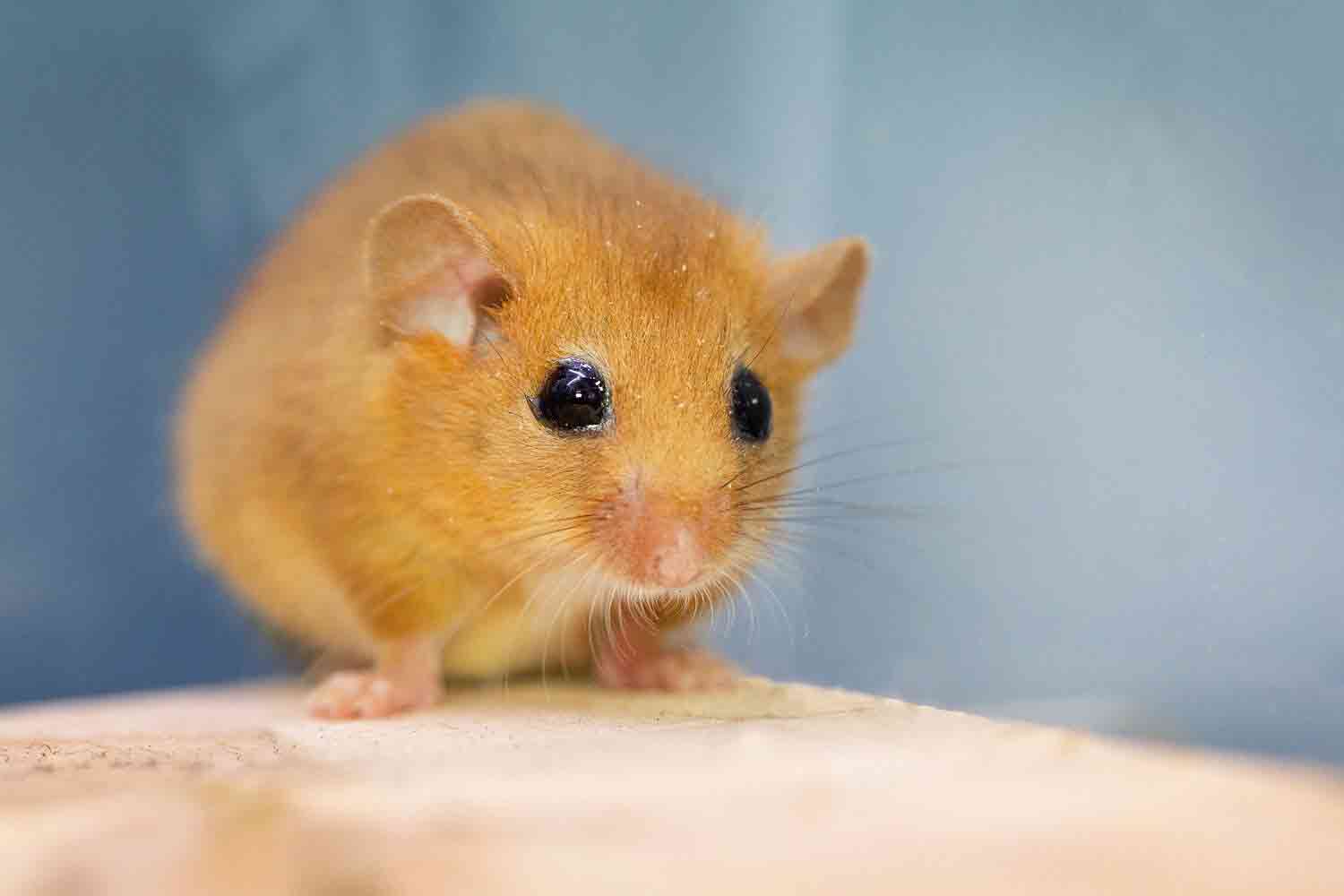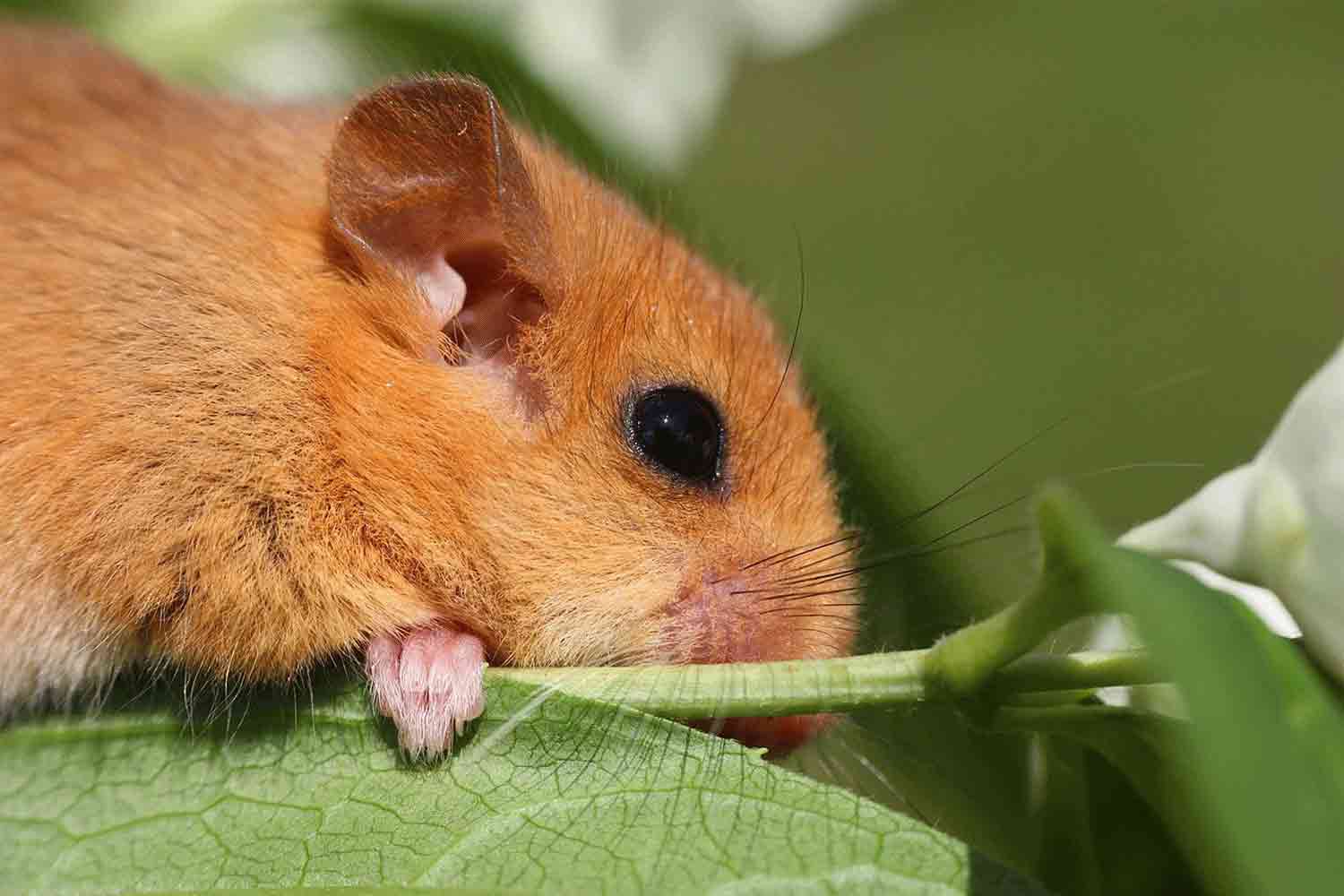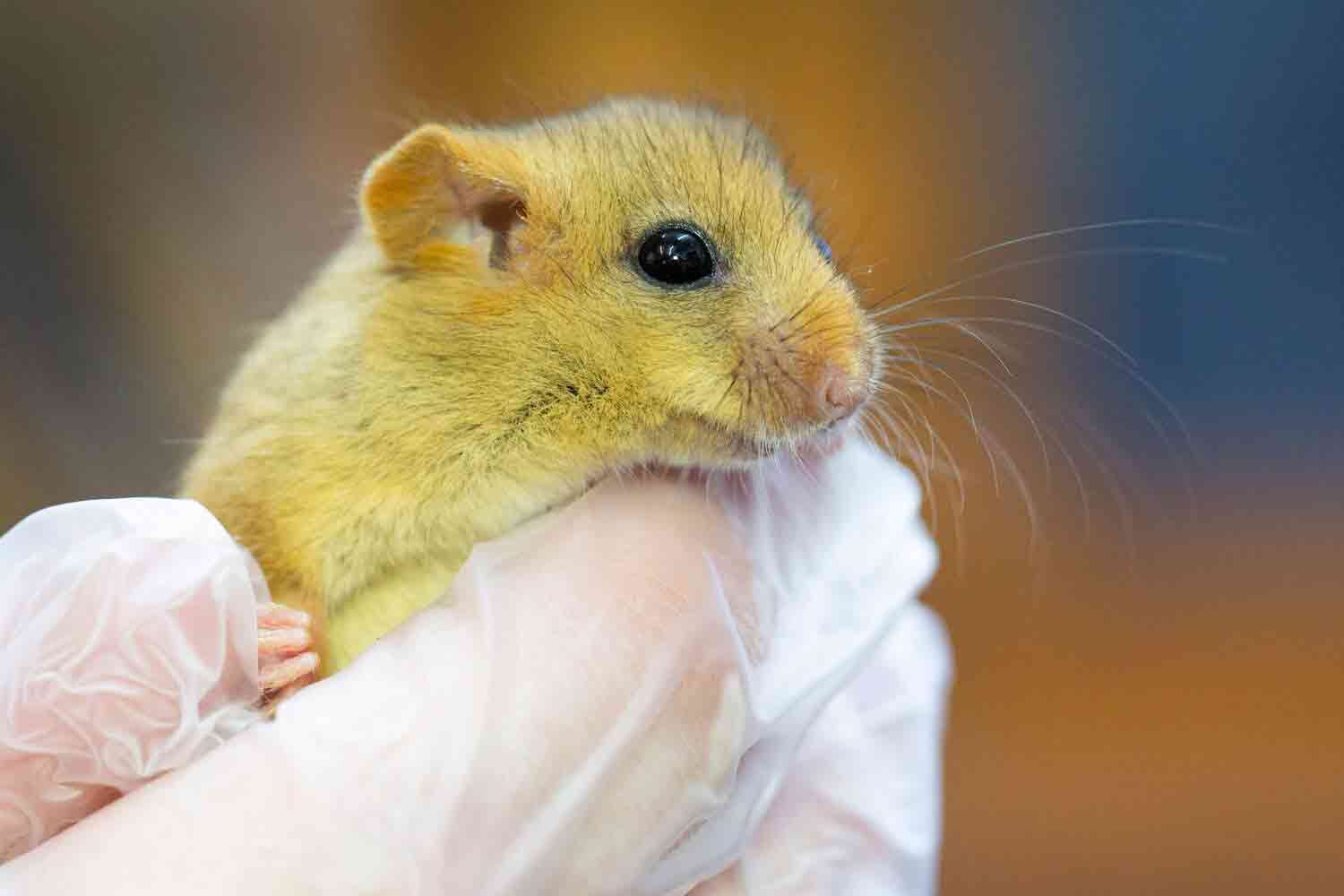Hazel Dormouse
Life History
Length: 6cm to 9cm
Tail: 5.7cm to 6.8cm
Weight: 15g to 40g
Average lifespan: 5 Years
Diet: Flowers, pollen, fruits, insects and nuts
When to see them: April to October
UK Conservation Status: Red List – Risk of extinction

About
The Brad Pitts of the small mammal world, Hazel Dormice are a popular UK species that attract a lot of attention, but are rarely seen. Fast asleep during the day, Dormice are heavily nocturnal as well as arboreal (living in trees). Enjoying a wide range of foods including hazelnuts, berries and insects, they leave their nests at night and using their acrobatic abilities they are able to avoid predation, whilst searching for food.
They are the only native small mammal with a furry tail.They may have round ears and long tails like mice, but dormice are not members of the same family as regular mice. Instead, they belong to the family and, like other mice, share a suborder with squirrels. But their story isn’t all positive. Due to loss of habitat and a warming climate, their population has declined by over two thirds since 2000.
Behaviour
Dormice live in trees and scrub, particularly bramble, in summer, building nests out of leaves and stripped bark. In autumn, dormice start looking for the perfect spot to hibernate for winter, building their hibernation nests using grass and leaves at the base of trees, under logs or in leaf litter where they can maintain an even temperature and humidity. Usually having one, sometimes two, litters a year, between May and September, dormice produce around 4-6 young, born blind and naked. Initially the young are greyish in colour, but by the time they are ready to leave the nest, around 4-6 weeks old, they are more of a golden colour, like their parents.
Dormice build multiple nests and may move between them, particularly if they are disturbed. The number of litters per year is largely controlled by the weather. In a year when food is scarce or when bad weather has prolonged hibernation or restricted the dormouse’s feeding time, most litters may not be produced until August, September or even later. In these cases, the young dormice will struggle to build up enough fat to survive winter.


Their Threats
Sensitive to environmental changes, like many species of wildlife, our dormice are vulnerable to the drastic changes in our weather patterns. Loss of habitat and a warming, wetter, climate are the two primary threats pushing dormice to extinction.
Unwilling to cross large, open spaces, fragmentation of dormouse habitat, including ancient woodlands and hedgerows, make it increasingly difficult for dormice to find food and additional nest sites.
How You Can Help
There are a number of simple ways you can help dormice:
- Help prevent habitat fragmentation, through campaigns and appropriate woodland management.
- Place nest boxes in woodland areas (with landowner’s permission). Their nest boxes are similar to that of bird boxes, but the entrance is placed at the back of the box adjoining the tree trunk. N.B. You must hold a licence from Natural England in order to check dormouse nest boxes.
- Plant hedgerows instead of fences to help create dormice dormouse corridors.
- Take part in local surveys and monitoring programs, to help with research of into the species.
Useful contacts

Frequently Asked Dormice Questions
I think I've found a dormouse
Dormice are quite a placid species, and unlike other species of mice, they will often stay in-situ when disturbed. If the dormice has not moved and is within it’s nest, it does not look injured or ill, then place the nest back where you found it. If the animal is injured or looks sick, then please call our emergency helpline.
Dormice are protected under several national and international legislations. To deliberately kill, capture, or disturb a dormouse is an offence, along with damaging or destroying an active breeding or resting site.
I've found an orphaned dormouse
If you have accidentally stumbled across the young, you must be sure they are definitely orphaned before touching or removing them from their nest. If you have found them away from their nest, check surrounding hedgerows and trees for possible nest sites, you can also contact the peoples trust for endangered species, where they will be able to help identify possible active nests with their records. If the young look weak and are not moving very much, please call us on our emergency helpline, but be sure to make a note of the exact location you have found them.
I'm planning a development, but have dormice present
If a development may effect a dormouse population or dispersal route, a mitigation licence is likely to be required. The licence is usually written and submitted by an ecological consultant with the aim of protecting the dormouse population whilst the work is underway and ensuring, in the longer term, that there is no nett loss of dormouse habitat.